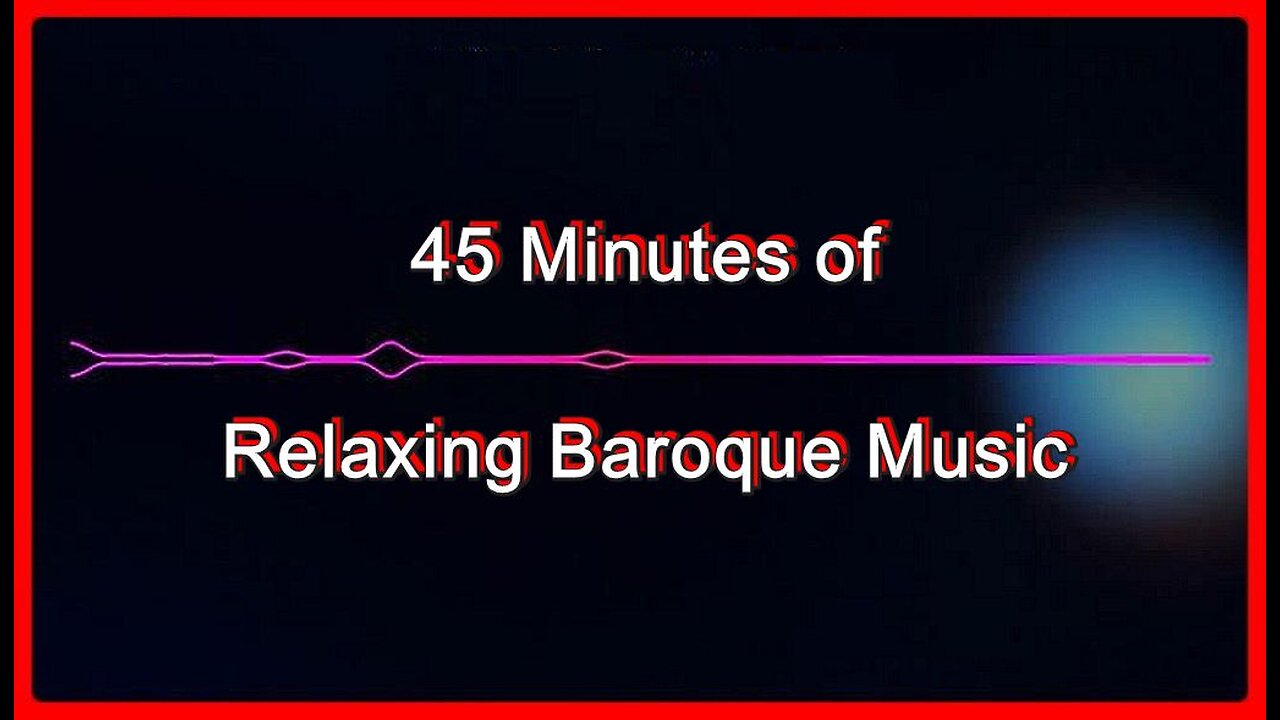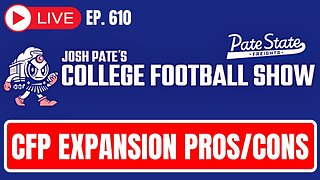Premium Only Content

Relaxing Baroque Music •🕞45m
I found this Baroque MP3 file in my archives and created a video. Enjoy.
(Excerpt: What is Baroque Music? https://www.baroque.org/baroque/whatis/ )
What is “Baroque,” and when was the Baroque period?
Derived from the Portuguese barroco, or “oddly shaped pearl,” the term “baroque” has been widely used since the nineteenth century to describe the period in Western European art music from about 1600 to 1750. Comparing some of music history’s greatest masterpieces to a misshapen pearl might seem strange to us today, but to the nineteenth-century critics who applied the term, the music of Bach and Handel’s era sounded overly ornamented and exaggerated. Having long since shed its derogatory connotations, “baroque” is now simply a convenient catch-all for one of the richest and most diverse periods in music history.
In addition to producing the earliest European music familiar to most of us, including Pachelbel’s Canon and Vivaldi’s The Four Seasons, the Baroque era also greatly expanded our horizons.
—— Different instrumental sounds: ——————
After being ignored for decades, Baroque music has become increasingly popular over the last fifty years. As part of this new interest, scholars and musicians have spent countless hours trying to figure out how the music might have sounded to 17th and 18th century audiences. While we will never be able to recreate a performance precisely, their work has unearthed several major differences between Baroque and modern ensembles:
—— Pitch: ——————————
In 1939, modern orchestras agreed to tune to a’=440hz (the note A pitched at 440 cycles per second), which replaced a previously lower pitch (a’=435hz) adopted in 1859. Before 1859, however, there was no pitch standard. The note to which Baroque ensembles tuned, therefore, varied widely at different times and in different places. As a result, the music notated on a score might have sounded as much as a half-tone lower than how it would traditionally be performed today. To allow for this discrepancy, many baroque ensembles adjust their tuning to the repertoire being performed: a’= 415hz for late baroque music, a’=392hz for French music, a’=440hz for early Italian music, and a’=430hz for classical repertoire.
—— Timbre: —————————
While most of the instruments in a baroque ensemble are familiar, there are several prominent members no longer featured in modern ensembles. The harpsichord was the primary keyboard instrument (and an important member of the continuo group), and instruments important in the 16th and 17th centuries like the lute and viol, continued to be used. Variations in instruments still popular today also gave the baroque ensemble a different sound. String instruments like the violin, viola, and cello used gut strings rather than strings wrapped in metal with which they are strung today, for example, giving them a mellower, sweeter tone.
—— Performance Technique: ——————
A baroque score contains little (if any) information about elements like articulation, ornamentation, or dynamics, so modern ensembles need to make their own informed choices before each performance. Mechanical differences between baroque and modern instruments also suggest that the older instruments would have sounded differently, so ensembles like Music of the Baroque often adjust their technique to allow for this. Because baroque and modern bows are structurally different, for example, string players using modern bows often use a gentler attack on the string and crescendos and diminuendos on longer notes. 17th and 18th-century performance treatises also imply that finger vibrato (a technique in which a string player rocks his or her fingertip on the string to enrich the tone) was used sparingly for expressive moments, while bow vibrato (an undulating movement of the bow) was generally preferred.
——• ✝️ "Page Chronicles" Channel & Operator DISCLAIMERS | All credit goes to the content creator(s).
📌 I do not own the ©️ Copyright / Licensing to this content - but it's posted Under ► Section 107 of the U.S. Copyright Act: “Notwithstanding the provisions of sections 106 and 106A, the fair use of a copyrighted work, including such use by reproduction in copies or phonorecords or by any other means specified by that section, for purposes such as criticism, comment, news reporting, teaching, scholarship, or research, is not an infringement of copyright. Fair use is a use permitted by copyright statute that might otherwise be infringing. Non-profit, educational, or personal use tips the balance in favor of fair use.
☕️ Buy me a coffee • : 👉 https://www.buymeacoffee.com/pagechronicles
🐦 Page Chronicles Twitter/X • : 👉 https://twitter.com/HelperPage
P.C. Community Guidelines Disclaimer: This video's point of view and purpose is not to bully or harass anybody but to share opinions and thoughts with like-minded individuals curious about this subject to encourage conversation and awareness.
-
 4:34:55
4:34:55
Page Chronicles
7 days agoErnst Zündel (1939 -2017) • 'The 1985 Great Holocaust Trial' - Setting the Record Straight • (Full)
419 -
 41:18
41:18
Kimberly Guilfoyle
6 hours agoToday, We Kash in on Equal Justice, Live with Ryan Walters & Daniel Turner | Ep.198
66.2K20 -
 1:36:50
1:36:50
Redacted News
5 hours agoThe TRUTH in Ukraine has been EXPOSED by Trump and they are melting down | Redacted w Clayton Morris
104K152 -
 2:05:35
2:05:35
The White House
6 hours agoPresident Trump Hosts a Reception Honoring Black History Month
64.7K36 -
 1:05:09
1:05:09
Josh Pate's College Football Show
6 hours ago $0.40 earnedCFP Expansion: Latest Intel | CFB’s Schedule Problem | Arch Manning Hype | ACC Program Rankings
15.6K2 -
 55:52
55:52
LFA TV
1 day agoTrump vs. Europe | TRUMPET DAILY 2.20.25 7PM
21K2 -
 31:02
31:02
Chrissy Clark
3 hours agoAn IVF Nightmare, Trump’s Illegal Immigration Crackdown, & Biden’s Student Loan Plan BLOCKED I URS
14.1K7 -
 1:02:57
1:02:57
In The Litter Box w/ Jewels & Catturd
1 day agoKASH CONFIRMATION TODAY! | In the Litter Box w/ Jewels & Catturd – Ep. 746 – 2/20/2025
118K71 -
 56:44
56:44
VSiNLive
4 hours ago $5.49 earnedFollow the Money with Mitch Moss & Pauly Howard | Hour 1
88.2K3 -
 1:08:41
1:08:41
John Crump Live
8 hours ago $2.49 earnedUSA v. Canada! Bigger Than Just A Game
41.4K6